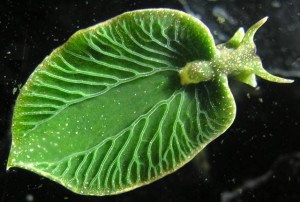It is important to understand genetic engineering and genetically modified organisms (GMOs). They have great potential but can also pollute the environment.
What is Genetic Engineering?
Genes are the encoding of the blueprints that produce an organism. Genetic engineering is the direct manipulation of the genes of an organism. This can be done through minor manipulation of a gene, such as simply damaging or removing it, or by transferring the gene from one organism to another. The transfer is usually accomplished using bacteria or viruses which are quiet happy to take genetic material from another organism or give their genes to another organism. Wikipedia actually has a pretty good outline of the process. For more detail, you might want to pick up a book on the topic, such as An Introduction to Genetic Engineering.
Artificial Engineering
Let’s start with the point that artificial genetic engineering is quite old. Domestication is the manipulation of the genome of a species. The difference between selective breeding and modern approaches is that we can pick and choose which genes to insert. We also no longer have to wait for novel genes to evolve. We can insert new genes that are not even in the genome rather than just change gene frequencies in a population and hope that novel genes arise through mutation.
One of the most common uses for artificial engineering of a genome is the addition of the insulin gene into fungi which are then grown in labs to produce large amounts of insulin for the diabetic community. Other hormones, enzymes, and proteins are produced in a similar fashion.
A less common use is the manipulation of genes in our food crops. One of the most well known examples is the addition of a gene from a cold water fish into the genome of a variety of tomato. People seem to think that this will produce a tomato with eyes, but it takes a large number of separate genes working together to code for something that complex. All the gene added to the tomato does is allow it to survive in colder weather without damage just like the gene does for the fish from which it was extracted.
Natural Engineering
I specifically used artificial engineering previously because there’s a lot of “genetic engineering” occurring in nature; as we sequence more and more genomes we are beginning to notice that genes have often transferred from one organism to another. How is this possible? Well as I said earlier, bacteria and viruses are very happy with giving and receiving genetic information.
One of the earliest examples of this gene transfer can be found in every fungus, plant, and animal; that example is mitochondrial DNA in eukaryote cells. Originally mitochondria were fully self sufficient organisms that happened to find their way into a larger host cell, but over time, genes were transferred from the mitochondria to the nucleus of the host cells and the mitochondria lost the ability to function without the host. In that way the large host cell with its nucleus and the small mitochondria became directly connected, both relying on the other to survive.
 Now the really strange part is that this can happen in even more advanced organisms; even multi-cellular organisms have seen what’s called horizontal or lateral gene transfer–the transfer of genes from one species to another. Probably the strangest example is a sea slug, Elysia chlorotica, that lives off of algae. These sea slugs are green, but it’s not just because they eat the green algae. Over time these slugs have actually absorbed the genes from the algae that are required to support photosynthesis into their own genome and produce needed products for chloroplasts living in their cells. As a result these slugs are actually fully photosynthetic. Given that infant slugs need to feed on algae to gather chloroplasts, my guess—and it is only my guess—is that the symbiotic relationship started relatively recently, but it could easily lead to a whole family of photosynthetic animals.
Now the really strange part is that this can happen in even more advanced organisms; even multi-cellular organisms have seen what’s called horizontal or lateral gene transfer–the transfer of genes from one species to another. Probably the strangest example is a sea slug, Elysia chlorotica, that lives off of algae. These sea slugs are green, but it’s not just because they eat the green algae. Over time these slugs have actually absorbed the genes from the algae that are required to support photosynthesis into their own genome and produce needed products for chloroplasts living in their cells. As a result these slugs are actually fully photosynthetic. Given that infant slugs need to feed on algae to gather chloroplasts, my guess—and it is only my guess—is that the symbiotic relationship started relatively recently, but it could easily lead to a whole family of photosynthetic animals.
